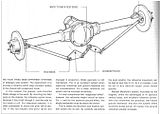SUCCESS!!!!! After much research, and pounding of pavement, I have found a solution to the problem. This was near and dear to my heart, as both of my SN95s were exhibiting issues with the UCAs, so I had a little skin in this game.
NAPA has the upper control arm, front bushing. It is part number 267-4460. The issue is that, for some reason, many of the books ONLY list that part number as being good from 79-93. WTFO. American Muscle has a listing for MOOG bushings under part # 88009 the same way. I called them, but they are insistent that it only fits the 79-93 model Foxes. My personal feeling is that they will fit, but I can't prove it right now.
The NAPA part number was the same way. In their book, it was from 79-93. I mic'd my bushing, compared and they sure looked the same. So, I took a chance and ordered two. They fit perfect. Now to be honest here, I ordered in a pair of used control arms, 79-98. I was told they were off a 98 GT. When you look at the listings on the control arms, it says that the they are the same from 79-04, but the 99-04 have a slightly larger hole for the bolt. But these fit, the bushings fit, and they fit on my SN95 as well. (I have only done one so far...maybe next weekend???)








 Reply With Quote
Reply With Quote







 LOL!
LOL!







Connect With Us